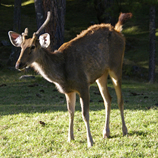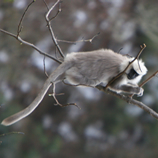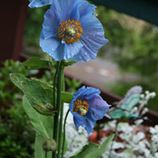


Bhutan boasts an incredible array of plant and animal life, thriving in ecosystems ranging from near sea level subtropical forests to snow-capped mountains exceeding 7500m. This diverse habitat supports over 5,500 plant species, nearly 200 mammal species, and over 600 bird species.
Birdlife in Bhutan
Bhutan's bird list continues to grow, reflecting its rich biodiversity and the limited amount of ornithological research conducted there. Currently, over 770 bird species have been recorded, making birdwatching tours extremely popular. Among these are:
- 16 globally threatened species
- Rare and endemic species like the golden langur
- Wintering black-necked cranes, a vulnerable species
- Wintering populations of the endangered white-bellied heron
Some bird species are migratory, passing through Bhutan between Tibet and northern India. The rare Pallas's fish eagle, often seen migrating up the Punak Chhu in spring, is frequently accompanied by ospreys, ducks, and waders like the pied avocet.
Bird Migration and Best Watching Locations
Winter drives many species to lower altitudes, including:
- Accentors, rosefinches, and grosbeaks
- Snow pigeons and pheasants like the satyr tragopan, Himalayan monal, and blood pheasant
In summer, lowland species like hoopoes, minivets, and cuckoos move to higher elevations to breed. Recommended birdwatching stretches include:
- The road from Dochu La to Wangdue Phodrang
- Wangdue Phodrang to Nobding
- Areas near Trongsa
- The descent between Sengor and Lingmethang (home to Ward's trogon and rufous-necked hornbill)
Mammals of Bhutan
Bhutan's wilderness is home to numerous large mammals, though sightings are often limited to trekkers or areas like Royal Manas National Park. Royal Manas harbors diverse South Asian game species, including:
- Water buffalo, gaur, serow, wild pig, and several deer species
- Asian elephants and the extremely rare greater one-horned rhinoceros
High-altitude trails may yield sightings of blue sheep (bharal), wolves, yaks, musk deer, and takins, Bhutan's national animal.
Primates of Bhutan
Several monkey species inhabit Bhutan, often visible near villages and roads:
- Assamese macaques (most common)
- Rhesus macaques (confined to southern foothills)
- Three langur species: Hanuman langur, golden langur (endemic to Bhutan), and another rare langur species
Big Cats and Other Carnivores
Bhutan is home to various cat species, including:
- Tigers (found in Royal Manas National Park and high-altitude areas)
- Snow leopards, known for their striking coats
- Clouded leopards, common leopards, and Asiatic golden cats
- Pallas's cat, marbled cat, fishing cat, lynx, and leopard cat
Other Notable Species
Two bear species exist in Bhutan:
- Himalayan black bear (omnivorous)
- Sloth bear (feeds on termites)
The red panda is found near Pele La, Thrumshing La, and Gasa district, where it forages on bamboo and bird nests.
Flora of Bhutan
Bhutan's flora is equally impressive, with over 5,000 plant species, including:
- 600+ orchid species
- 300 medicinal plants
- 50+ rhododendron species
Forests cover 72% of Bhutan's land, exceeding the national target of 60%, and serve as both a vital resource and a cultural element.